SAP systems have become an integral part of many organizations, managing critical business processes and data. However, with the increasing sophistication of cybersecurity threats, SAP environments are not immune to attacks. To safeguard sensitive information and ensure business continuity, it’s imperative to implement robust cybersecurity measures.
Understanding the Cyber Risks in SAP Systems

SAP (Systems, Applications, and Products) systems are essential for managing business processes, encompassing everything from financials and human resources to supply chain management.
Due to their central role in operations, they are an attractive target for cybercriminals. Below is a more detailed look into the cybersecurity risks associated with SAP systems:
1. Data Breaches
Data breaches occur when unauthorized individuals gain access to sensitive business information within the SAP environment. Given the vast amount of critical data housed in SAP systems, from customer records to financial reports, a breach can result in:
Financial Losses: Stolen or leaked financial data can lead to fraudulent transactions or lost competitive advantage.
Reputational Damage: The exposure of confidential data can harm a company’s reputation, eroding customer and partner trust.
Regulatory Fines: Many industries are subject to strict data protection regulations, such as GDPR, and breaches can result in significant fines if compliance is violated.
2. Malware Attacks
SAP systems can also be compromised by malware, which can infiltrate the network through various entry points, including phishing emails or malicious software downloads. Once inside, malware can:
Disrupt Operations: System functionality can be hindered or halted entirely, leading to downtime and affecting business continuity.
Steal Sensitive Data: Malware can be programmed to exfiltrate confidential information, from intellectual property to personal customer data.
Compromise System Integrity: Attackers can manipulate the SAP environment by corrupting or altering data, making it difficult to trust the accuracy of information or reports.
3. Social Engineering Attacks
Human error remains one of the biggest cybersecurity risks to any system, including SAP. Social engineering attacks, particularly phishing, are designed to exploit this weakness by:
Tricking Employees: Attackers can deceive employees into sharing login credentials, downloading malware, or providing other sensitive details.
Gaining Unauthorized Access: By impersonating trusted sources, attackers can manipulate employees to grant access to restricted areas of the SAP system.
Phishing emails that appear legitimate might target employees with links that lead to harmful websites or requests that encourage the downloading of malicious software. Training employees on identifying social engineering attacks is a critical step in minimizing this risk.
4. Configuration Errors
Improper system configuration or neglected patches can leave SAP systems exposed to cyberattacks. This can occur through:
Misconfigurations: Incorrect system settings can create security gaps, such as open ports or weak password policies, that cybercriminals can exploit.
Vulnerabilities in Outdated Software: If the SAP system isn’t updated regularly with security patches, it becomes susceptible to known vulnerabilities that attackers can use to gain entry.
Organizations must regularly audit their SAP configurations, follow best security practices, and ensure timely patch management to protect against these risks.
Implementing Proactive Cybersecurity Measures for Data Protection

Reports reveal that in the year 2023, there were 2,365 cyberattacks affecting 343,338,964 victims.
To safeguard against the increasing cybersecurity threats and achieve maximum data protection, organizations must adopt a proactive cybersecurity strategy.
This approach involves anticipating potential risks and implementing measures to prevent breaches before they occur.
Here’s how you can strengthen your SAP environment with proactive security practices, according to our cybersecurity experts:
Regular Security Assessments
Conducting frequent, in-depth security assessments is essential to identify vulnerabilities and potential weaknesses in your SAP systems. These assessments should evaluate not only the SAP software but also the underlying infrastructure, including databases, networks, and third-party integrations. Regular audits help you discover gaps in security protocols and take corrective action before attackers can exploit them.
Patch Management

SAP systems are incredibly intricate, integrating various business processes and sensitive data into a single platform. While this complexity is beneficial for large organizations, it also means that even minor vulnerabilities can have significant consequences if left unaddressed.
One of the most common entry points for cybercriminals is outdated software, which may contain known vulnerabilities that can be easily exploited. Failing to stay up-to-date with the latest patches puts the entire system at risk.
Effective patch management involves more than just periodically updating software—it requires a structured approach to ensure all components of the SAP system, including applications, operating systems, databases, and third-party plugins, are always updated with the latest security patches. SAP regularly releases patches to address vulnerabilities and enhance system stability. These patches include fixes for issues that have been identified through internal testing or by external security researchers.
However, patch management is not just about applying updates as soon as they are released. Organizations need to establish a proactive patch management strategy that includes:
Monitoring for Updates: Stay informed about the latest patches SAP releases, which may be scheduled quarterly or in response to newly identified threats.
Testing Before Deployment: Before applying patches to live environments, it’s essential to test them in a non-production environment. This ensures compatibility and prevents disruptions to business operations.
Regular Maintenance Schedules: Establishing a regular schedule for reviewing and implementing patches helps ensure that no updates are overlooked, minimizing vulnerabilities.
Documenting the Process: Maintain a clear record of patches applied, including the date, version, and any associated changes to ensure accountability and track potential issues.
Prompt implementation of security patches significantly reduces the risk of breaches, protecting critical business operations from both internal errors and external threats.
User Access Management
Implementing strict user access controls is fundamental to reducing insider threats and minimizing exposure to sensitive information. Role-based access management ensures that employees only have access to the data and systems they need to perform their jobs. This approach limits the potential damage from compromised accounts and ensures compliance with data protection regulations.
Network Security

Securing the network infrastructure is essential to preventing unauthorized access to your SAP environment.
Utilize firewalls, intrusion detection and prevention systems (IDPS), and virtual private networks (VPNs) to protect your network perimeter. Network segmentation can further isolate critical systems from broader networks, limiting the scope of an attack.
Data Encryption
Protecting sensitive data both at rest and in transit is an important step in maintaining confidentiality and integrity. Encrypting data ensures that even if it’s intercepted or compromised, it cannot be easily read or used by unauthorized parties. Modern encryption standards should be applied across all data storage and transmission processes, particularly for financial and personal information.
Security Awareness Training
Human error remains a significant factor in many security breaches. Regular security awareness training for employees from cybersecurity experts helps reduce the risk of phishing, malware infections, and other social engineering attacks. By educating staff on best practices, such as identifying suspicious emails or websites, organizations can create a culture of security that extends beyond technology.
Adopt Artificial Intelligence for Cybersecurity
Leveraging AI-powered solutions, according to our cybersecurity experts, can significantly enhance an organization’s ability to detect, analyze, and respond to emerging cyber threats with greater speed and accuracy.
AI systems can continuously monitor vast amounts of data and identify abnormal patterns that might signal malicious activity. Unlike traditional security methods, which rely on predefined rules and human intervention, AI can autonomously recognize subtle changes in user behavior, network traffic, or system anomalies that might go unnoticed. This enables organizations to address potential threats before they escalate into full-blown attacks.
Additionally, AI can identify security weaknesses by scanning systems for vulnerabilities and providing actionable insights. This predictive threat intelligence allows businesses to fortify their defenses proactively rather than reactively responding to a breach after it occurs. By predicting the nature of potential attacks, AI-driven systems can help security teams prioritize high-risk areas and allocate resources more efficiently.
Integrating AI with SAP systems and other business-critical infrastructures ensures that threats are detected and mitigated early, reducing the likelihood of severe data breaches or operational disruptions. As AI models continue to learn and evolve, they improve in accuracy, adapting to new tactics used by cybercriminals.
Continuous Monitoring

Continuous monitoring is an essential component of maintaining robust security in an SAP environment. With the increasing complexity of modern business operations and the growing sophistication of cyber threats, relying on periodic security checks or manual reviews is no longer sufficient. Continuous monitoring allows organizations to detect potential threats as they occur, enabling a proactive defense strategy.
One of the most effective tools for continuous monitoring is Security Information and Event Management (SIEM). SIEM solutions provide IT teams with real-time insights into activities within the SAP environment. By collecting and analyzing logs, event data, and user activities from various sources, these systems can identify patterns that deviate from normal operations, signaling potential security issues. For instance, abnormal login attempts, unauthorized access to sensitive data, or unusual system behaviors can trigger alerts that demand immediate attention.
In addition to flagging anomalies, SIEM solutions facilitate quick and informed responses to threats. By centralizing security data, they allow IT teams to investigate suspicious activities, trace the origin of the threat, and take corrective actions swiftly. This capability significantly reduces the time between the detection of a threat and its neutralization, minimizing the risk of a full-blown security breach.
Implementing SIEM in an SAP environment is not just about detecting external cyberattacks. It also helps in identifying internal threats, such as unauthorized access by employees or mishandling of critical data. With real-time monitoring, organizations can ensure that any suspicious activities, whether internal or external, are immediately flagged for investigation. This reduces the likelihood of data leaks, fraud, or other malicious activities going unnoticed until it’s too late.
By integrating these proactive cybersecurity measures, organizations can better protect their SAP environments from both internal and external threats, ensuring the integrity and security of their critical business operations.
The Role of Cybersecurity Experts
Cybersecurity experts have a major role in safeguarding an organization’s digital assets, data, and overall infrastructure from cyber threats. As technology advances and cyberattacks become more sophisticated, the expertise of cybersecurity experts is essential to building a secure and resilient environment.
Conduct In-Depth Security Assessments
Cybersecurity experts are responsible for identifying vulnerabilities within an organization’s network, systems, and applications. They conduct comprehensive risk assessments, including penetration testing, vulnerability scanning, and security audits, to detect weak points that could be exploited by attackers. By understanding the organization’s unique threat landscape, these experts help prioritize security improvements and prevent potential breaches before they occur.
Provide Ongoing Monitoring and Threat Detection
Cybersecurity is an ongoing process, and threats are constantly evolving. Cybersecurity experts set up advanced monitoring systems to track network activity, detect suspicious behavior, and identify emerging threats in real time. This continuous surveillance allows organizations to stay ahead of potential risks and quickly address vulnerabilities.
Respond to Security Incidents Efficiently
When a security breach or cyberattack occurs, a quick and effective response is critical. Cybersecurity experts are trained to respond to incidents efficiently, minimizing damage and recovery time. They investigate the source of the attack, contain the breach, mitigate its impact, and develop a recovery plan.
Overall, cybersecurity experts provide organizations with the knowledge, tools, and strategies needed to protect against increasingly complex cyber threats. Their role is essential for maintaining data integrity, safeguarding sensitive information, and ensuring business continuity in an interconnected digital world.
If you’re seeking expert guidance on mitigating cyber risks in your SAP environment, contact CYNAZ Inc. Our team of cybersecurity professionals specializes in protecting SAP systems from threats. We leverage advanced technologies and methodologies to ensure the security and integrity of your critical business data.
Our expertise includes:
- ERP cybersecurity experts for data protection
- Security Information and Event Management (SIEM) for IT Companies
- Multi-factor authentication solutions for IT and ERP
By partnering with CYNAZ Inc., you can confidently protect your SAP environment and mitigate the risks of cyberattacks. Contact us today for more details.
